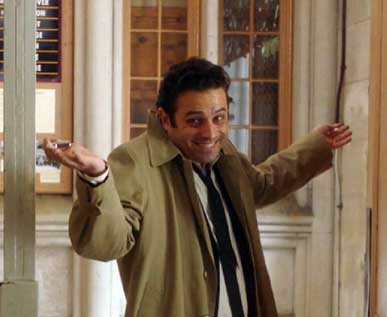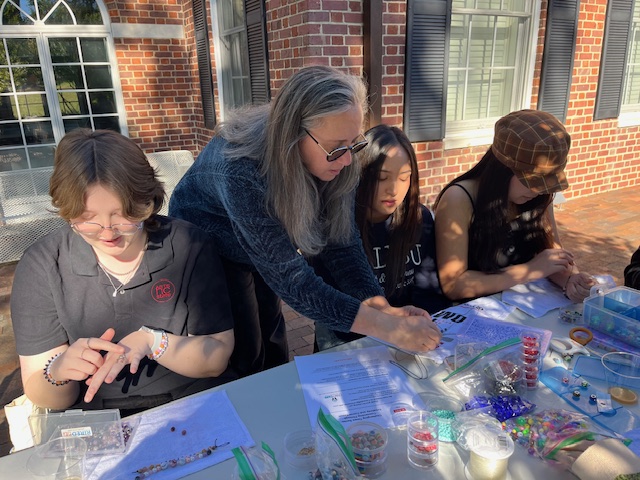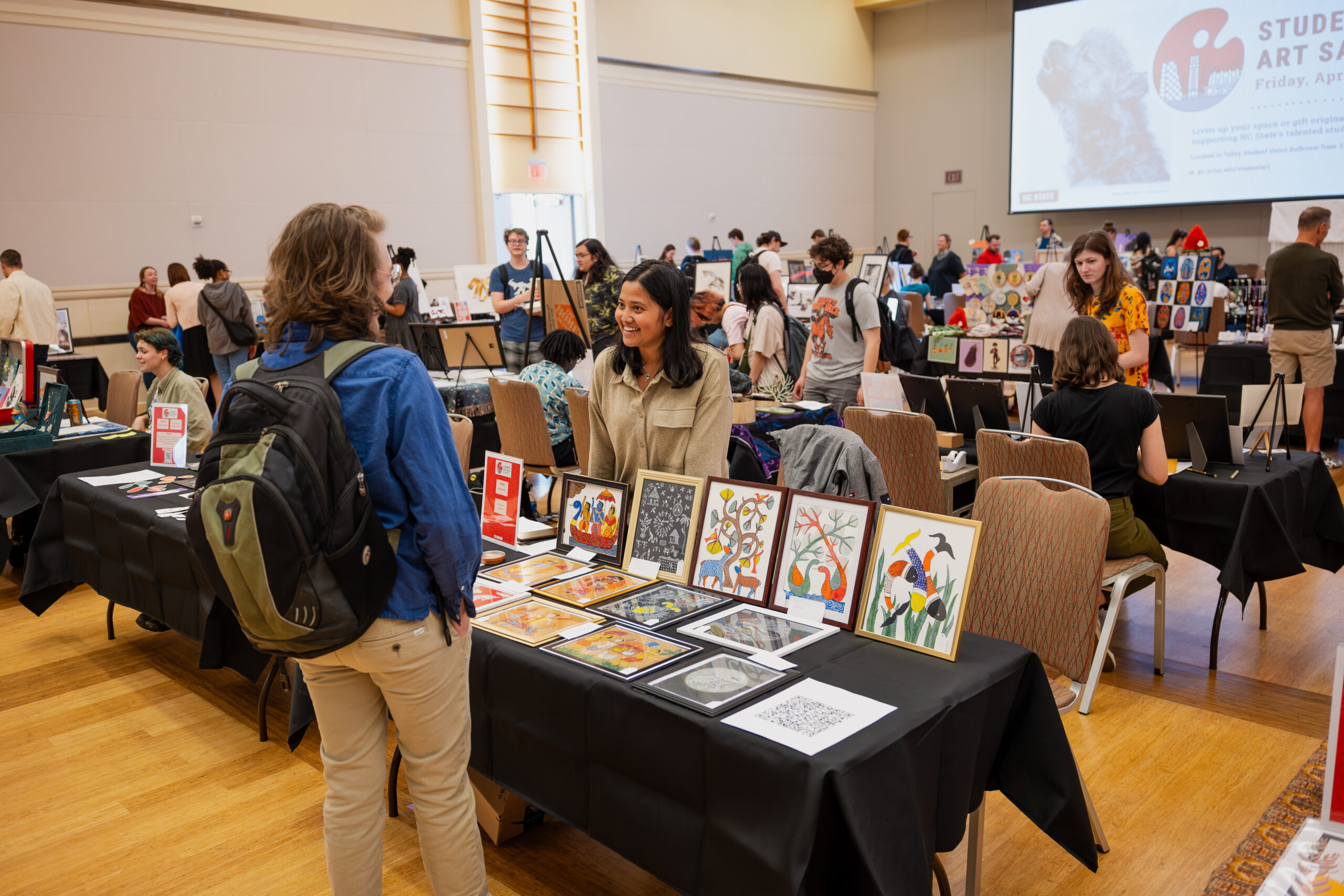Our Life in The Arts
Questions, reality, and musings on a life of joy and wonder
Vol. 1, No. 2
February 8, 2021
Embracing Failure
By Rich Holly

During most academic years (not this past year, that’s for sure!) I offer and lead a small handful of drum circles on the NC State University campus for groups of non-arts major students, typically 15-20 at a time. After welcoming them, my first question is “How many of you have experience playing or singing music?” The percentage of students who raise their hand varies from group to group, but generally it’s in the 30-40% range. My second question is then “How many of you love failure?” I can clearly recall how many of the hundreds of students in these circles over the past six years have raised their hands: exactly ONE.
Drum circles are offered all over the world for a wide variety of reasons and for a similarly varied set of populations. I like to conduct mine to help embed four things into the students’ mindsets: trust, teamwork, fun, and embracing failure.
As the years have gone by, I’ve noticed (as have many of my colleagues) that students in each successive generation become more and more fearful of failure. I have a few theories about why this is. One of these theories, which has great support in the United States, is that standardized testing in K-12 created too much “teaching for the test.” And, if a student does poorly on a standardized test, they can easily become stigmatized or categorized or treated differently. Standardized testing, I believe, is corporate greed run amok, and does nothing to improve education. In fact, I would argue it harms education by creating great stress in students and parents, which leads to fear (and shame) of failure.
My other favorite theory, which I can’t currently prove (but I’ve shared it with licensed counselors who believe I’m correct) is to blame soccer. Okay, don’t get mad at me, it’s not just soccer – feel free to substitute another all-encompassing activity – but it’s the easiest way to explain myself. Stay with me here as I explain in greater detail.
Starting in the 1960s there was a determined effort to get more American youth to participate in community-sponsored soccer. By the late 1970s soccer was taking hold and becoming a much more common sport for children in the United States. While there are several positive aspects of participation in soccer, I believe the level of participation that eventually became expected has also, well, run amok. (And again, feel free to substitute another activity as you think about this).
So, by the mid-1980s what happened is that all across the US school children were enrolled in community-sponsored soccer that was meeting, in many cases, six to seven days a week. Consequently, here’s a description of a school child’s life:
- Wake up, get ready for school, hopefully eat a good breakfast
- Go to school, where for 7-8 hours they’re told what to do, when to do it, and how to do it
- Get picked up by a parent, driven to soccer, where they’re told what to do, when to do it, and how to do it
- Get picked up by a parent, driven home where they’ve missed the family dinner, eat leftovers (or junk?), do their homework
- Go to bed
- Repeat
- Weekends: get driven – often a long drive – to a soccer game
What, then, are the results of this kind of life? And I’m not sure which of these is worse – the students have close to no time at all to daydream, no time to improvise playtime with friends, no time to think for themselves, hardly any time to read fiction for pleasure (and thus engage their imagination), and no time to experiment with life (and therefore experience failure on their own terms without someone telling them “that’s wrong”). Their lives are consumed by “do this, don’t do that.” This approach to bringing up children, I believe, also stymies creativity, curiosity, empathy, and other human traits that we value so strongly in the arts and wish more citizens had in abundance.
Just about ten days ago I read a newly-released report on a study, one result of which is that while 74% of fifth graders say they are engaged with school, only 32% of high school juniors say that. WHOA! What happened??
I’m sure there are several reasons why this may be: lack of self-confidence, pressure to perform at the highest levels, lack of sleep, society and schools not fostering intrinsic motivation, and so on. And yet I can’t help but think – if students learned to fail and then embrace failure at an early age, wouldn’t they have greater self-confidence? Wouldn’t that relieve some or much of the pressure to perform at a high level? Wouldn’t that allow them to sleep better at night? Wouldn’t that make them aware of their own intrinsic motivation and be able to ignore (or at least not be forced by) extrinsic motivation?
All too often we’re told about and remember historical figures’ greatest achievements. Thousands upon thousands of awards are given out every year all over the globe for great achievements. Do you recall any stories in a history class about the greatest failures? Odds are extremely good that anyone who is recognized or noted for a great achievement had plenty of failures before (and probably after) they achieved greatness.
Thomas Edison was asked by a reporter what it was like to fail 1,000 times before finally making a working light bulb that would stay lit. His response? That he didn’t fail 1,000 times, that the light bulb was an invention with 1,000 steps to it. He embraced failure and made it work to his advantage.
Do you know why WD-40 is called that? Because the team working on a “Water Displacement formula” had 39 previous formulas that didn’t work. They didn’t give up – they learned from each “failure” and worked until they created one of most frequently used household and mechanical products in the world.
Stories like this are easy to find, and I recommend you do find them. Here’s one source. If you know you’re not embracing failure, or want to be better at it, I encourage you to buy and read and take to heart one or more of the several highly-rated books available on the subject. The bottom line is that embracing failure and moving forward is how you achieve greatness, whether your greatness makes it into any history books, wins awards, or not.
I sincerely believe that participating in the arts – being an art maker – helps us to better embrace failure than those who do not participate in the arts. And yet, I know I had periods of my development in which I was not embracing it nearly as well as I might have, and I have witnessed this from countless colleagues and students over the years. Clearly, we all have work to do on this front.
If you don’t embrace failure yet, or need work to embrace it better, allow me to provide a few tips and reminders that I’ve found helpful.
Every failure – every mistake – is a learning experience. The first time you tried to ride a bike you went 30 miles and switched between every gear on a 20-speed bike, right? Of course not! You had a one-speed bike and you fell over – you might have also gotten hurt. Between your personal motivation and your parents’ encouragement, you got up, brushed yourself off, and tried again. A few years later you got a bigger bike, and, if you still ride today, now you might have a 20-speed bike and take long rides. Those were your 1,000 steps to bike riding greatness.
You see? You’ve already experienced what embracing failure is all about and how well it works to make your life better.
One thing I’ve tried to instill in my students is how to talk to yourself when you make a mistake. Music schools the world over are filled with students in practice rooms using curse words out loud or in their heads dozens of times every hour. They get mad at themselves for making a mistake, whether it’s the wrong pitch, poor tonal quality, their eyes got lost in the music, or what have you.
I recommend you work seriously on not getting mad while engaged in your art making – train yourself to be your own best teacher. Make a mental note of the mistake, don’t let it create anger. Then pause, ask yourself some questions, and make sure you come up with answers that create positive action steps:
- What exactly happened?
- Why and/or how did it happen?
- What can I do to prevent it from happening again?
The arts are a competitive field. As professionals we may not frequently (or ever) participate in an actual competition, but our work is commonly judged against the work of others. More important, I believe, is to judge your work against your previous work. Be grateful for the strides you’ve made over time. Revel in the beauty that is art making and never let it become drudgery – it’s our primary passion and source of joy!
It’s also easy to fall into the trap of items outside of your control making you feel like a failure. There’s a scene in the show The Marvelous Mrs. Maisel in which Mrs. Maisel asks comedian Lenny Bruce if he loves comedy. He proceeds to name about 6-8 reasons why it’s a horrible way to make a living. She follows up by asking “But, do you LOVE it?” He raises his shoulders, points his hands up and out, and puts a sly smile on his face. Of course he loves it!

I’d like to think you’re pursuing your artistry because you love it (the real story of Lenny Bruce is far more complicated, and please feel free to look into him more if you don’t know about him). Don’t ever let your pursuing your artistry feel horrible, no matter how many obstacles you encounter, and especially not because of any mistakes or perceived failures you may have made or experienced along the way. And don’t let “the system” dictate your happiness and progress toward success.
Embrace failure, acknowledge mistakes, learn from them, accept and find routes around barriers, understand and celebrate the advances you’re making, and achieve greatness.
Rich Holly serves Arts NC State and the NC State University community as the Executive Director for the Arts.
- Categories:


